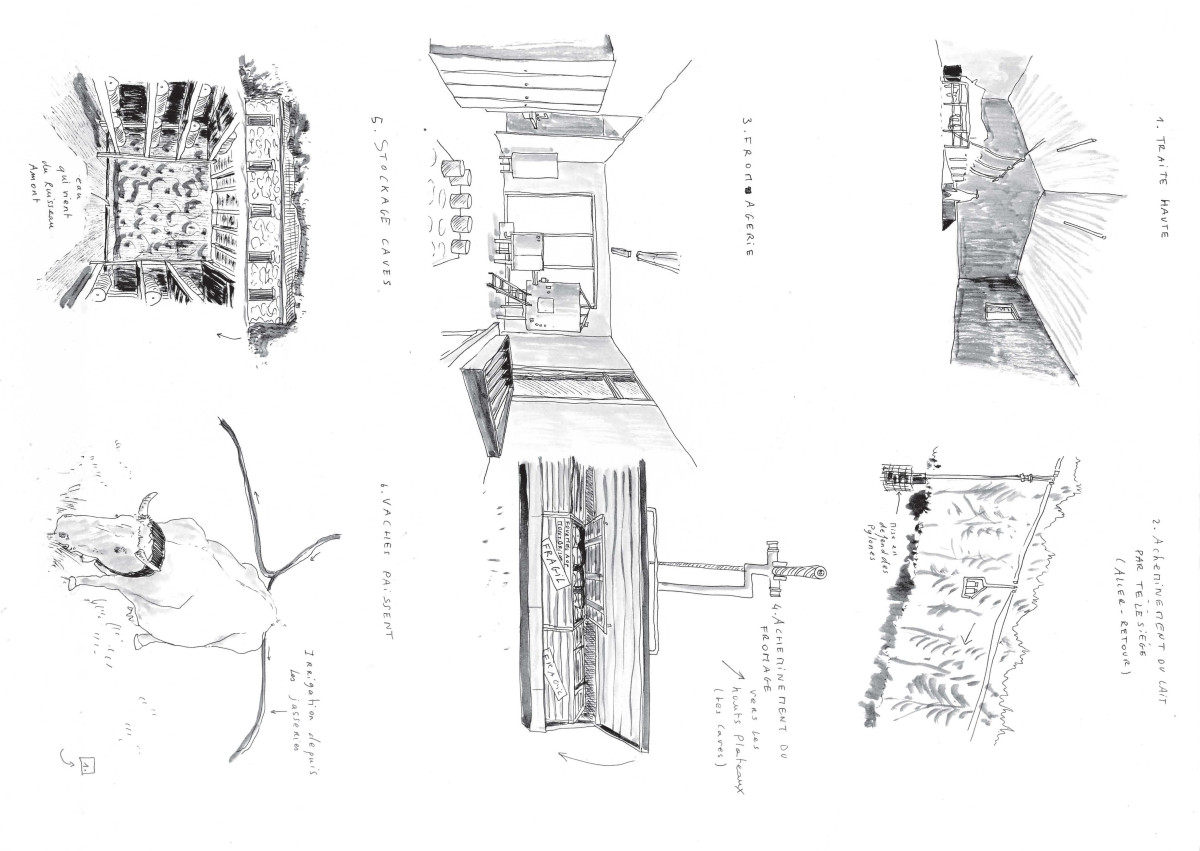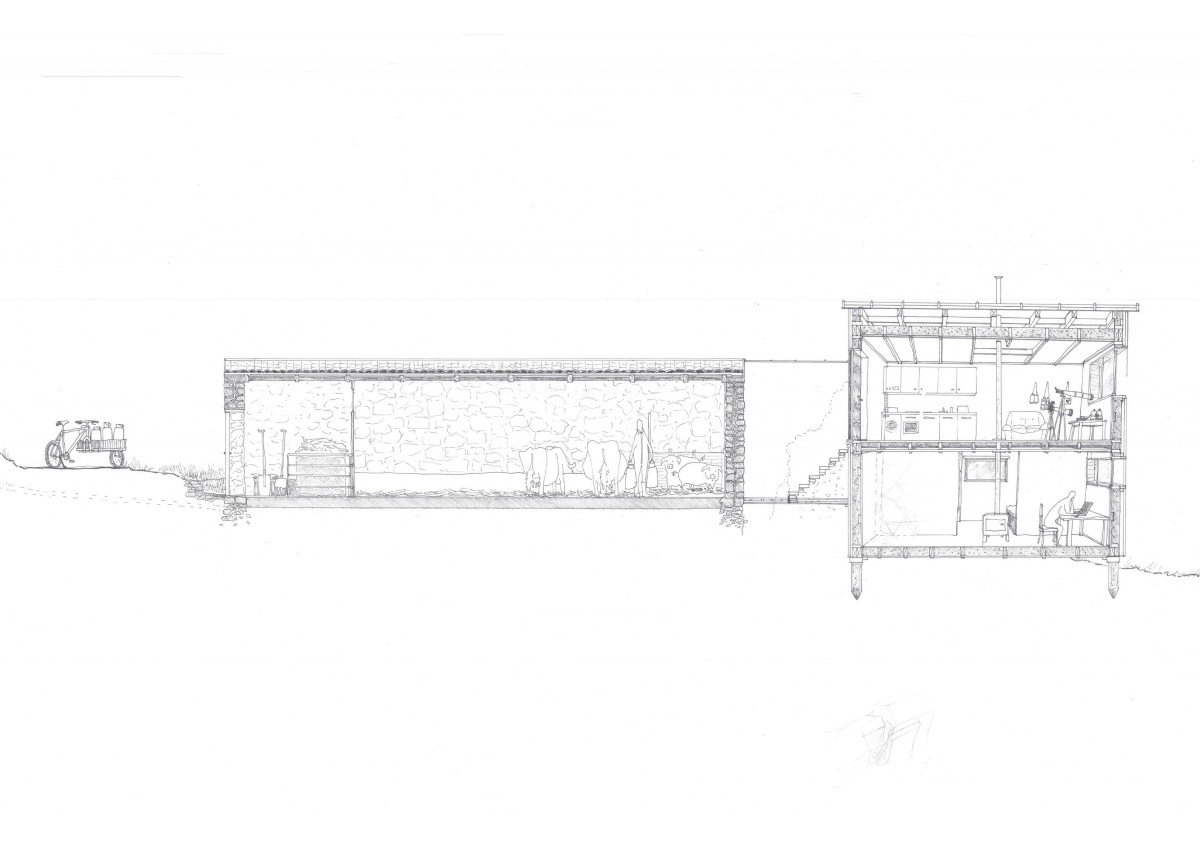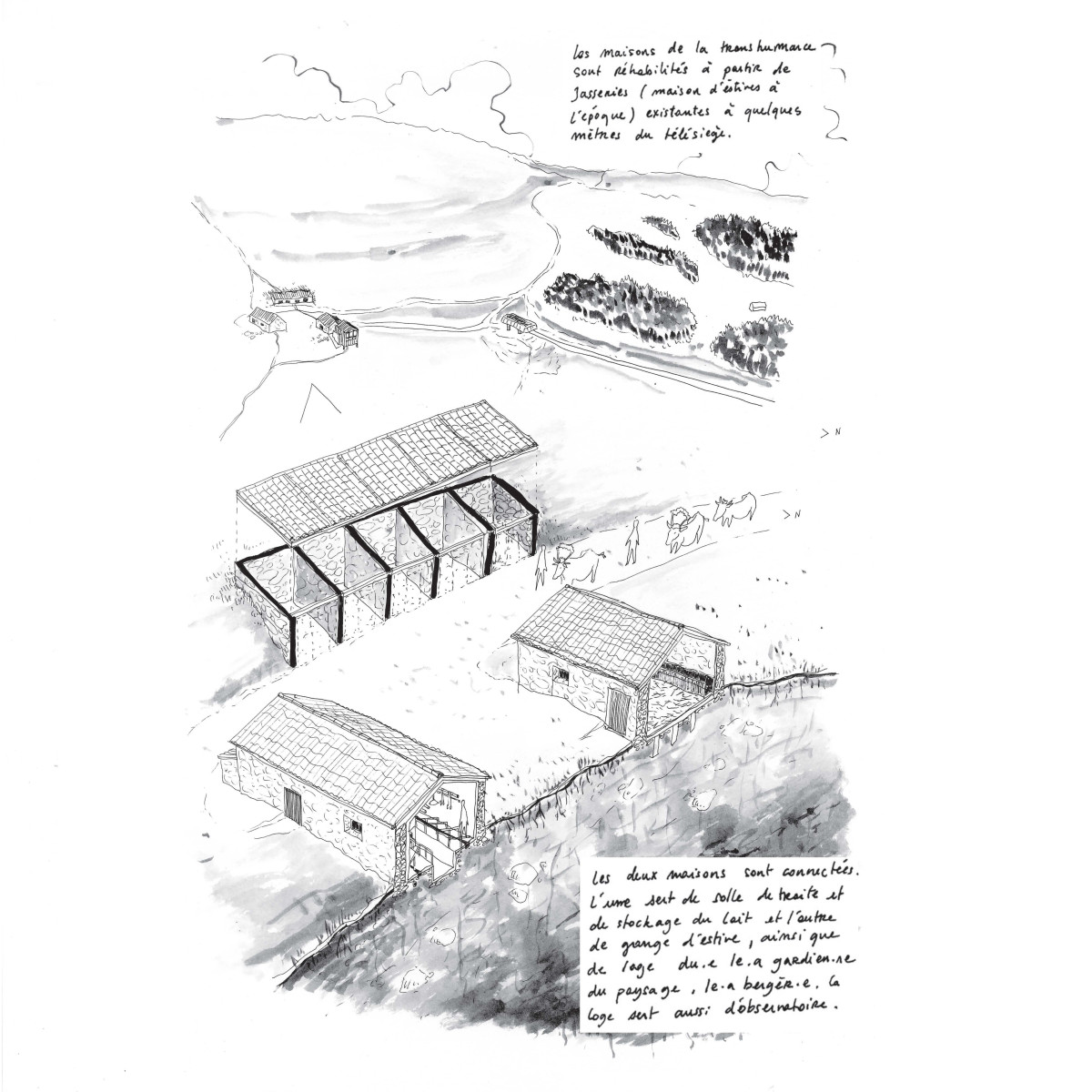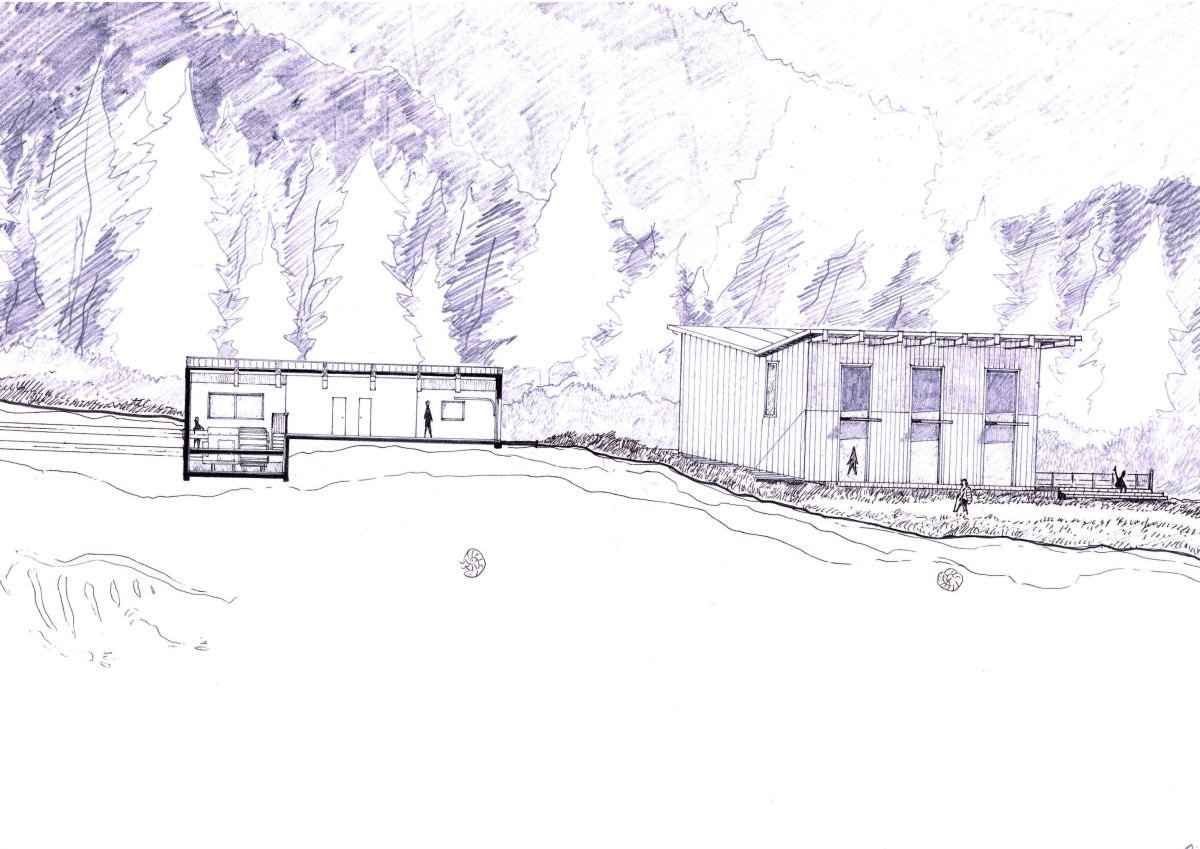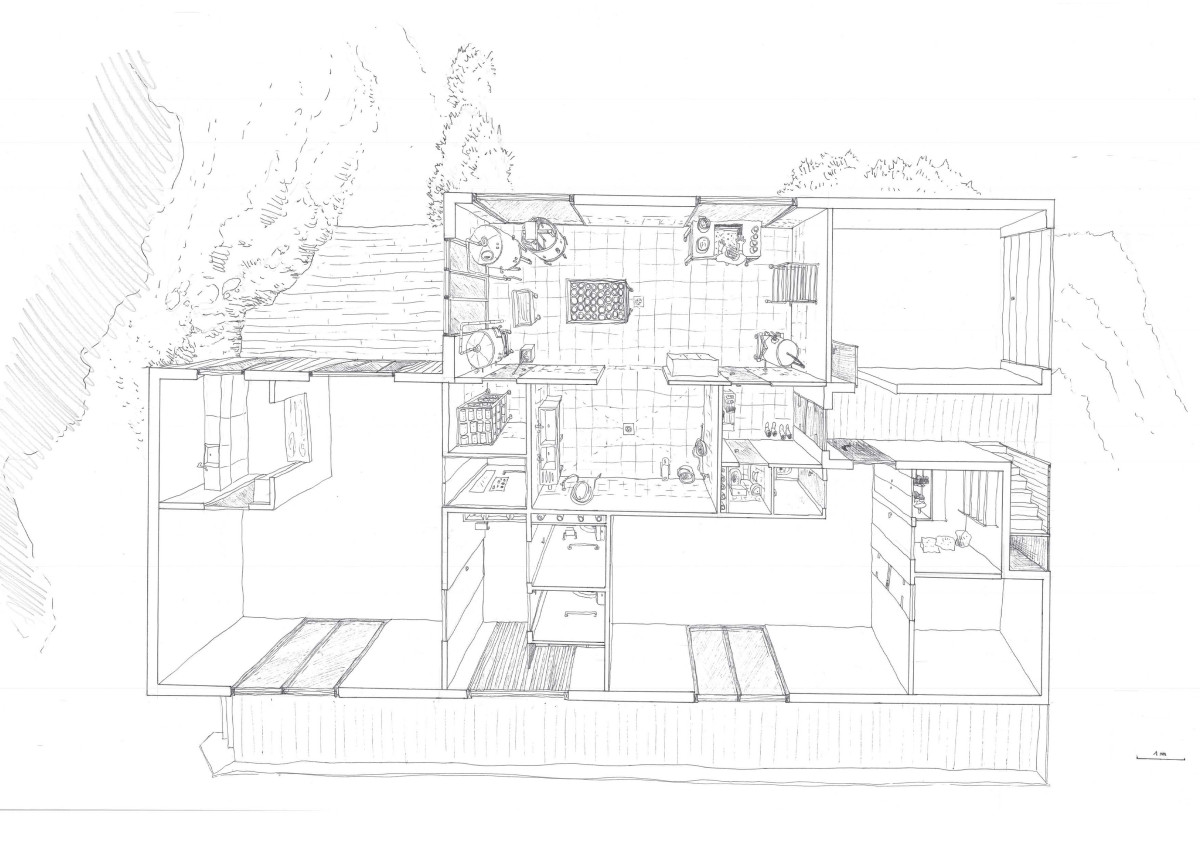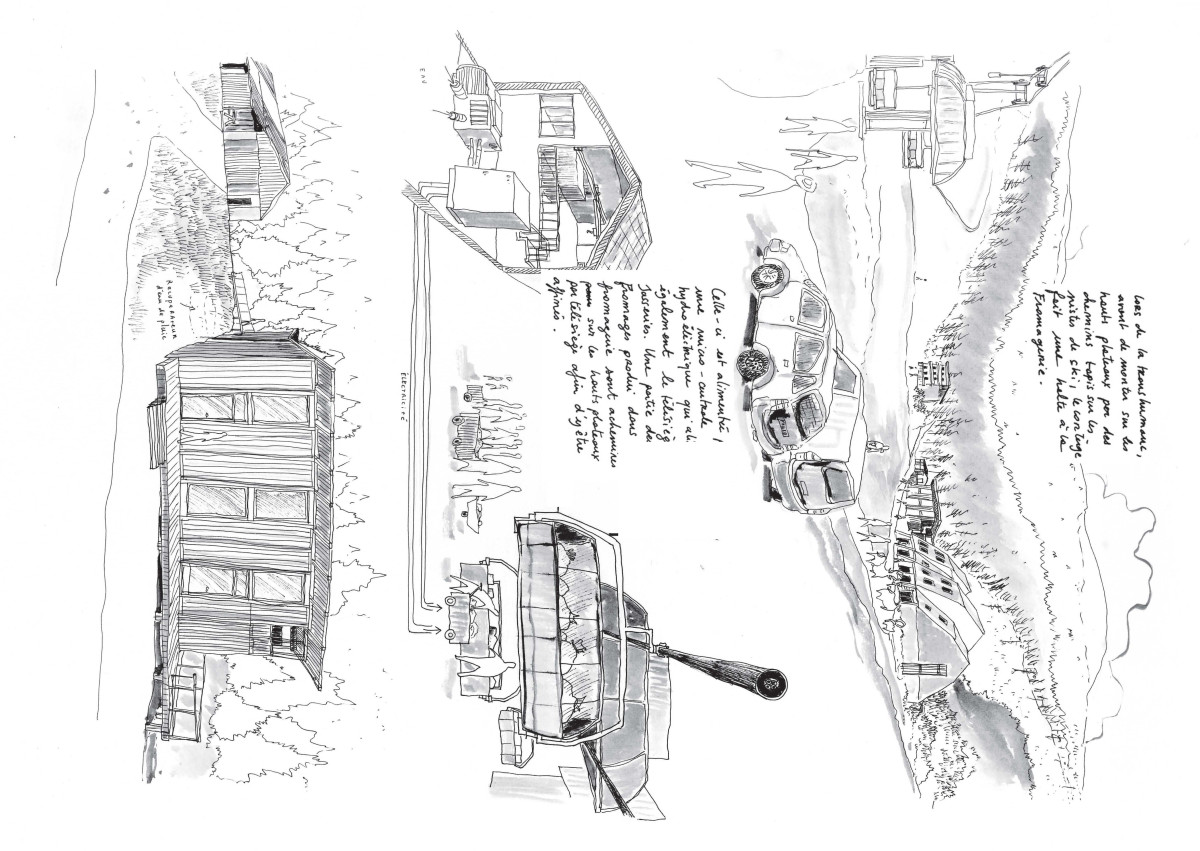Jurybegründung
Kürzlich von der ENSA Paris graduierte Cécile Gaudard und wurde für ihr Projekt, bestehend aus 6 Schwarz-Weiß-Zeichnungen mit Filzstift und Tinte, vom Jurorenteam für ihre ästhetischen und narrativen Qualitäten gelobt. Tief verwurzelt im Forez-Gebirge in Frankreich schlägt Cécile Gaudard eine Reappropriation einer von der Anthropozän-Ära veränderten Berglandschaft vor, indem sie ein Skigebiet in einen Käseproduktionsstandort verwandelt. Indem sie die schädlichen Auswirkungen der Forstwirtschaft auf Landschaften hervorhebt, schlägt das Projekt vor, ein Gleichgewicht zwischen dem Schutz der Umwelt und der Aufrechterhaltung der aktuellen Wirtschaften und Lebensweisen zu finden.
Das Projekt
The caretakers – an exploration on a traumatized landscape
In the rural expanse of the Forezian Moutains in France, where the population density stands at 8.5 residents per square kilometer, lies the Lignon watercourse. This waterway meanders through the region, eventually merging its flow with the Loire River. Within this picturesque setting, several distinctive features shape the landscape: an ongoing granite quarry operation, which recently secured a 30-year extension; a ski resort grappling with insufficient winter snowfall, contemplating a transformation into a year-round destination through enhanced infrastructure; the presence of 66 mountain-installed chairlift poles; a freshly constructed water reservoir, boasting a 45,000 m3 capacity, dedicated to artificial snow generation; the existence of four dams and five sawmills; the traversal of high-voltage power lines and a Hertzian station; seven dairy farms and three other farming establishments. Cumulatively, these activities and developments a threat over the Lignon watercourse and its ecosystem.
The main challenge we face today is how to inhabit and coexist on a land that has experienced significant trauma. Specifically, our area has been affected by the consequences of excessive winter sports activities, leading to a lack of snow that now slow down these activities. The question underneath is how leading an approach that does not advocate for a complete cessation of all activities in the region but to have an alternative approach to harmoniously inhabit the area and reevaluate the situation.
To embark on this exploration through a fictional lens, we narrate a tale driven by those who have played a role in shaping the actual landscape and how they will now become its guardians. For instance, shepherds will guide their flocks to summer pastures, and fishermen will take care of the waterways. Our story is organised around the primary watercourse, which uses its power periodically to generate energy. This process allows for the reintroduction of sustainable ways of life and economic practices on a broader scale across the territory. In essence, we aim to create a harmonious and mutually beneficial relationship between humans and the environment, enabling a new era of coexistence and prosperity.



